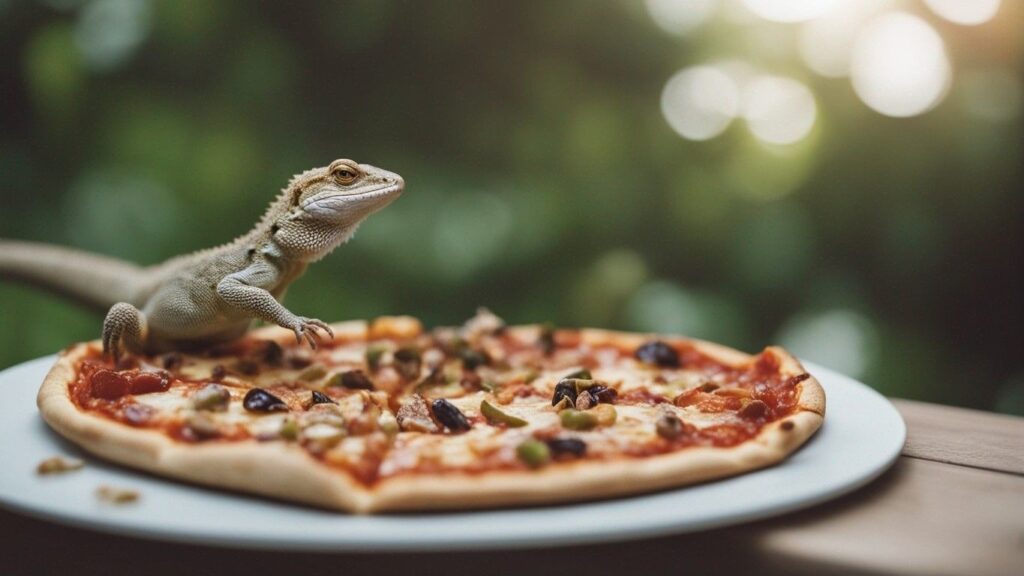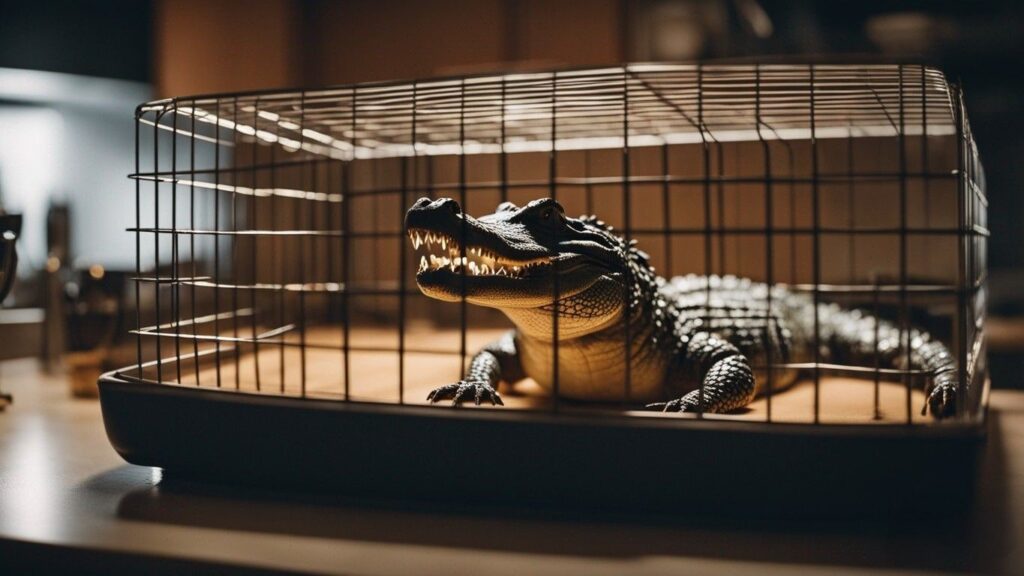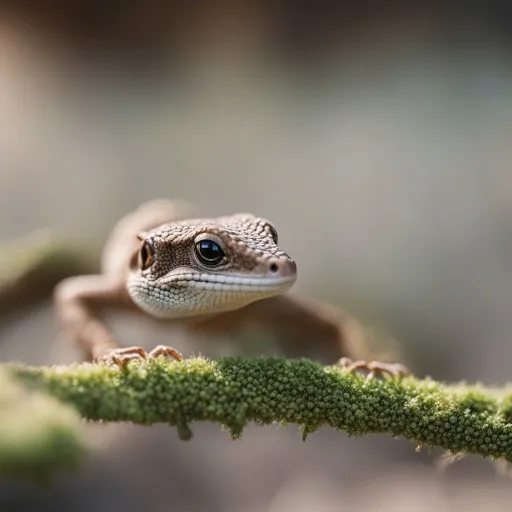
So, you’re the proud new owner of a baby lizard and you’re wondering, “What do you feed a baby lizard?”
Well, fear not, because we’ve got you covered. Feeding a baby lizard may seem like a daunting task, but with a little knowledge and preparation, you’ll have your little scaly friend happily munching away in no time.
In this article, we’ll explore the best dietary options for your baby lizard, covering everything from live insects to commercial reptile food.
By the end, you’ll have all the information you need to keep your baby lizard happy and healthy with a well-balanced diet. Let’s get started, shall we?
Types of Baby Lizards
Anole Lizards
Anole lizards are small, colorful lizards that are commonly found in tropical regions. When it comes to feeding baby Anole lizards, their diet mainly consists of insects, small spiders, and even small slugs.
They have a high protein requirement and need to be fed a variety of different insects to ensure they receive adequate nutrition.
Gecko Lizards
Gecko lizards are known for their unique ability to climb walls and ceilings. These fascinating creatures have a mainly insectivorous diet, and baby geckos are no exception.
They thrive on a diet rich in small insects such as crickets, fruit flies, and mealworms. Additionally, some gecko species also enjoy feeding on fruits and nectar, which can be offered as a supplement to their insect-based diet.
Bearded Dragons
Bearded dragons are popular pet lizards that originate from Australia. Baby bearded dragons have specific dietary requirements to support their growth and development.
They require a diet that consists of both insects and leafy greens. The insects can include crickets, mealworms, and small roaches, while the leafy greens can include kale, collard greens, and mustard greens.
Skinks
Skinks are a diverse group of lizards known for their shiny scales and often vibrant patterns. They are primarily insectivorous, and their diet should consist of a wide range of small insects such as crickets, mealworms, and waxworms.
It is crucial to provide a varied diet to ensure they receive all the necessary nutrients for healthy growth.
Chameleons
Chameleons are renowned for their ability to change colors and their unique tongue projection to capture prey.
Baby chameleons have specific dietary needs, and their diet mainly consists of gut-loaded insects such as crickets, roaches, and silkworms.
It is important to dust the insects with calcium and vitamin D3 supplements to prevent nutritional deficiencies.
Iguanas
Iguanas are large lizards commonly found in tropical regions. While their diet changes as they grow, baby iguanas require a diet rich in leafy greens and a moderate amount of protein.
Leafy greens such as collard greens, dandelion greens, and mustard greens should make up the majority of their diet, along with small amounts of insects or commercially prepared iguana food.
Blue-Tongued Skinks
Blue-tongued skinks are known for their striking blue tongues and docile nature. Baby blue-tongued skinks have similar dietary requirements to adult skinks.
Their diet consists of a mix of insects, fruits, and vegetables. Insects like crickets, mealworms, and silkworms provide them with protein, while a variety of fruits and vegetables offer essential vitamins and minerals.
Water Dragons
Water dragons are semi-aquatic lizards found in Southeast Asia and Australia. Baby water dragons require a diet that includes both insects and plant matter.
Insects such as crickets, mealworms, and small roaches should be offered, along with finely chopped leafy greens and vegetables.
It is important to provide a balanced diet to ensure their overall health and well-being.
Horned Lizards
Horned lizards, also known as horned toads, are known for their unique spiky appearance. Baby horned lizards mainly feed on small insects, such as ants and beetles.
It is important to ensure a steady supply of small, appropriately-sized insects to meet their nutritional needs. They should also be provided with a calcium supplement to support their bone development.
Frilled Dragons
Frilled dragons, also known as frilled-neck lizards, are arboreal lizards native to Australia and New Guinea.
Baby frilled dragons have a primarily insect-based diet, consisting of small crickets, mealworms, and silkworms.
In addition to insects, they also benefit from consuming leafy greens, such as dandelion greens and collard greens, which offer essential vitamins and minerals.
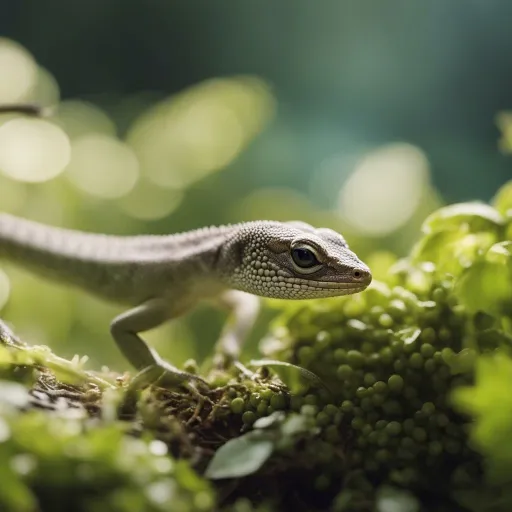
General Dietary Guidelines for Baby Lizards
Protein Requirements
Protein is a crucial component of a baby lizard’s diet as it supports their growth and development. Insects such as crickets, mealworms, and roaches are excellent sources of protein.
The size of the insects should be appropriate for the size of the lizard to avoid any choking hazards.
Calcium and Vitamin D3
Calcium and vitamin D3 are essential for proper bone development in baby lizards. Dusting their food with a calcium and vitamin D3 supplement is necessary to prevent conditions like metabolic bone disease.
This can be done by lightly coating the insects or other food items with the supplement powder.
Gut-Loading and Dusting
Gut-loading refers to feeding nutritious food to the insects before offering them to baby lizards.
This ensures that the insects provide optimal nutrition to the lizards. Additionally, dusting the insects with a calcium and vitamin D3 supplement further enhances their nutritional value.
Frequency of Feeding
Baby lizards have high metabolic rates and, as a result, need to eat more frequently than adult lizards.
They should be fed daily or every other day, depending on their species and age. It is important not to overfeed them, as this can lead to obesity and other health issues.
Food Size
The size of the food offered to baby lizards should be appropriate for their size. It is crucial to avoid offering food that is too large, as it can cause choking or other digestive issues.
Generally, the food should be smaller than the width between the lizard’s eyes.
2.6 Water
Providing a clean and shallow water dish is essential for baby lizards. They should have access to fresh water at all times. Some lizards may also benefit from occasional misting to maintain proper hydration, especially those that are native to more humid environments.
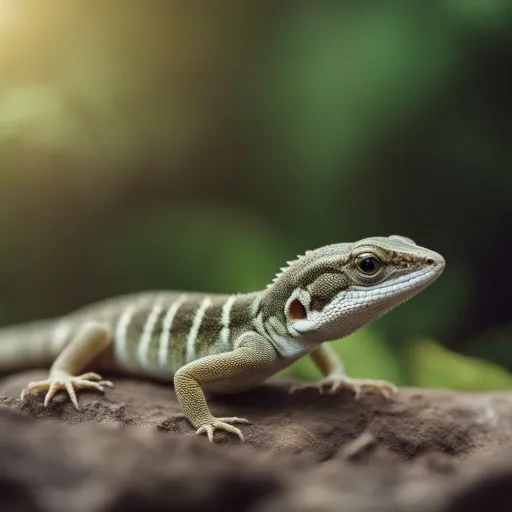
Specific Diets for Different Baby Lizards
Anole Lizards
Insects for Anole Lizards
Anole lizards primarily feed on a variety of insects, including small crickets, fruit flies, and small spiders.
These insects should be appropriately sized for the baby lizards to prevent any feeding difficulties. Offering a mixture of different insects ensures a diverse and balanced diet.
Fruits and Vegetables for Anole Lizards
In addition to insects, Anole lizards can also consume small amounts of fruits and vegetables. Soft fruits like mashed banana or small pieces of berries can be offered as occasional treats.
Additionally, leafy greens like spinach or finely chopped vegetables such as carrots and squash can be provided to add some variety to their diet.
Gecko Lizards
Insects for Gecko Lizards
Gecko lizards thrive on a diet rich in insects such as crickets, fruit flies, and small roaches. It is important to provide appropriately-sized insects to prevent any feeding difficulties. Offering a variety of insects ensures they receive a wide range of nutrients for optimal health.
Fruits and Nectar for Gecko Lizards
Some gecko species, such as crested geckos, enjoy feeding on fruits and nectar. Replicating their natural diet, fruits like mashed banana, pureed mango, or small pieces of fruit can be offered as occasional treats.
Nectar-based diets, created specifically for geckos, can also be introduced in addition to their insect-based diet.
Bearded Dragons
Insects for Bearded Dragons
Bearded dragons have specific dietary requirements, and their diet includes a combination of insects and vegetables.
Small insects like crickets, mealworms, and small roaches can be offered as a protein source.
It is important to gut-load and dust the insects with a calcium supplement for optimal nutrition.
Greens and Vegetables for Bearded Dragons
Leafy greens such as collard greens, kale, and mustard greens make up a significant portion of a bearded dragon’s diet.
Additionally, vegetables like butternut squash, bell peppers, and carrots can be offered as well. It is crucial to provide a variety of greens and vegetables to ensure a balanced diet and optimal nutrition.
Monitoring and Adjusting Diets
As you delve into the wonderful world of keeping a baby lizard, monitoring their growth and making adjustments to their diets is crucial.
Observing their eating habits, stool consistency, and physical developments can give insights into their dietary needs.
It is also important to consult with a veterinarian or a reptile expert to devise a nutrition plan tailored to your specific type of baby lizard.
Adapting Diet As They Grow
As your baby lizard grows, its dietary needs will evolve. Generally, the proportion of insects in their diet may decrease while the amount of plant matter may increase, depending on the species.
Adapting the diet to suit their changing needs will ensure they remain healthy and thrive in captivity.
For example, bearded dragons gradually shift to a more herbivorous diet as they mature, while anoles maintain a largely insectivorous diet throughout their lives.
Hygiene and Food Safety
Maintaining hygiene and safety during feeding is imperative. Always wash your hands before and after handling both your lizard and their food.
Remove uneaten food promptly to prevent spoilage and bacterial growth. Providing food in shallow dishes can prevent the baby lizard from ingesting substrate accidentally, which can lead to impaction and other health issues.
Vet Check-ups
Regular vet check-ups are recommended to monitor the health of your baby lizard. Veterinarians specializing in reptiles can provide guidance on diet and supplements to prevent nutrient deficiencies and other health issues.
They can also assist in monitoring your baby lizard’s growth and development, helping to identify and address any potential issues before they become serious.
Supplementary Accessories
Investing in some accessories like feeding tweezers can make feeding time easier and more hygienic.
Additionally, having a proper lighting setup that includes UVB lights can help in the synthesis of Vitamin D3, which aids in calcium absorption, promoting healthier bone development.
Final Thoughts
Raising a baby lizard can be a rewarding and enriching experience. Armed with the knowledge on the specific dietary needs and preferences of different types of baby lizards, you can provide a nurturing environment for your new pet.
Remember to always provide fresh water, maintain cleanliness, and offer a balanced diet that caters to their nutritional needs.
With careful monitoring and a well-planned diet, your baby lizard will grow into a healthy and happy adult.
Whether you have an anole, gecko, bearded dragon, or any other type of baby lizard, understanding their dietary needs is the first step towards fostering a long and healthy life for your scaly friend.
In this comprehensive guide, we have covered the basic dietary requirements for various types of baby lizards.
It serves as a springboard to dive deeper into the specific needs of your pet lizard. We wish you and your new pet many happy and healthy years together!


